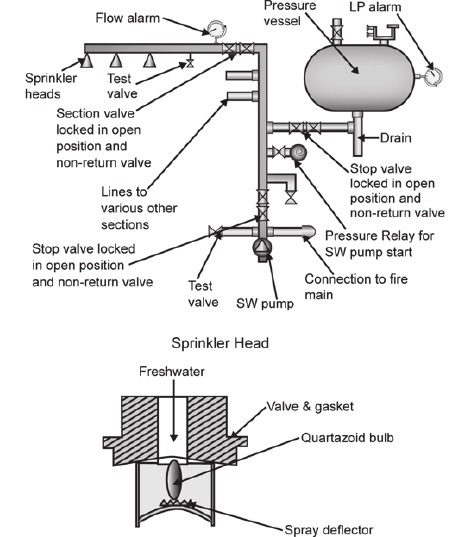
Accomodation sprinkler system for cargo ships
There may be a variety of different fixed fire fighting installations exist, some of which are specifically designed for certain types of ship.
The sketch shows a sprinkler system suitable for
accommodation purposes. A fire in a one section would
cause a rise in temperature, causing a quartazoid bulb in a
sprinkler head to break, which would then start spraying the
area with fresh water.
Once this happens, a flow alarm for this section will operate giving an alarm on a control panel that is normally situated on the bridge. This panel will show the section where the sprinkler head has activated, moulting in someone investigating the situation. If it is a genuine alarm, the fire alarm will be sounded, if a false alarm, the manual stop valve for this section, which will be locked open, can be shut, the key normally being behind a break glass panel in the vicinity of the valve.
Once this happens, a flow alarm for this section will operate giving an alarm on a control panel that is normally situated on the bridge. This panel will show the section where the sprinkler head has activated, moulting in someone investigating the situation. If it is a genuine alarm, the fire alarm will be sounded, if a false alarm, the manual stop valve for this section, which will be locked open, can be shut, the key normally being behind a break glass panel in the vicinity of the valve.


